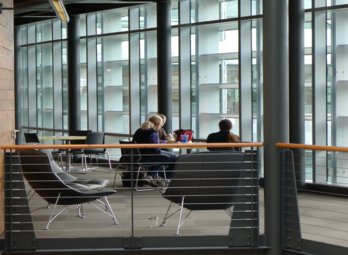 Less than 17 hours a week. That’s the average amount of time people spend outdoors in daylight. People live indoors the remaining 151 hours and spend the majority of their waking hours indoors at work. As a result, there are limited opportunities for people to receive sufficient daylight to synchronize their circadian functioning to daily light-dark cycles. Several studies link circadian disruption to health problems such as poor sleep, higher stress, heart disease, and diabetes.
The shift from being outside all the time to being inside most of the time presents a public health concern, and people are starting to take notice - so much so that this topic has become mainstream through green building conferences, design forums, even TED Talks.
This is precisely why GSA, a large steward of real estate, is conducting research on circadian light in federal buildings. GSA has a unique opportunity to optimize the luminous environment within its buildings to improve the health and well-being of its tenants. GSA is currently testing several strategies such as supplemental desktop lighting to determine their effectiveness in boosting circadian stimulus levels in workspaces.
See more information on GSA’s research.
Circadian Light Study Locations:
Edith Green-Wendell Wyatt Federal Building
Federal Center South, Building 1202
GSA Headquarters Building
GSA National Capital Region Headquarters Building
Wayne N. Aspinall Federal Building and U.S. Courthouse
Posted by Bryan Steverson, a Sustainability and Green Buildings Program Advisor in GSA’s Office of Federal High-Performance Green Buildings. Bryan manages GSA’s circadian lighting program. |